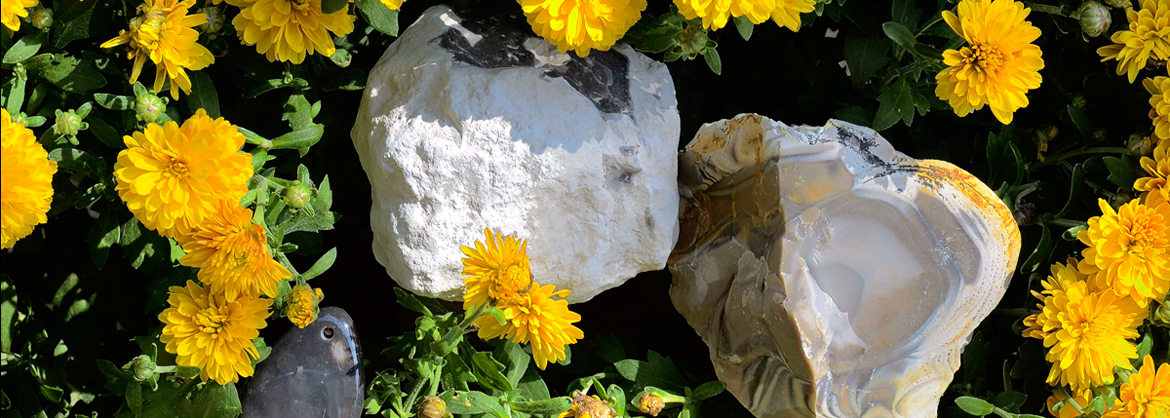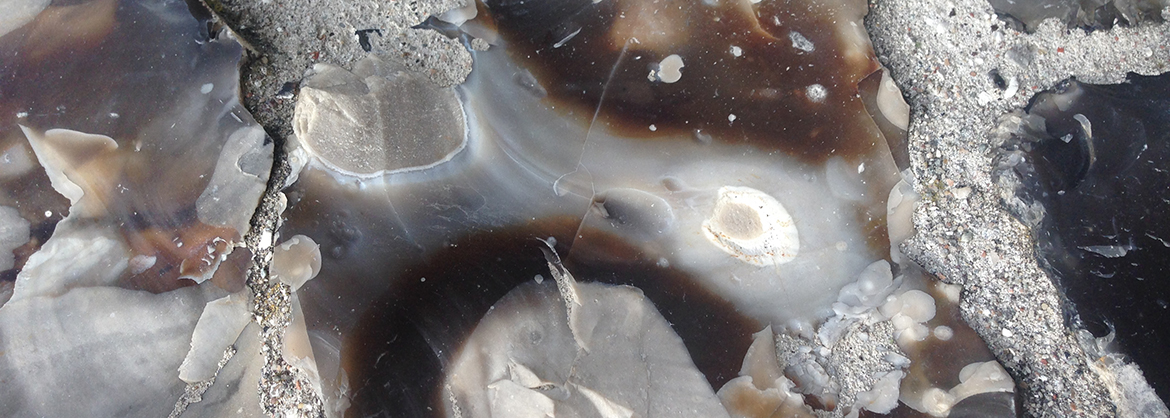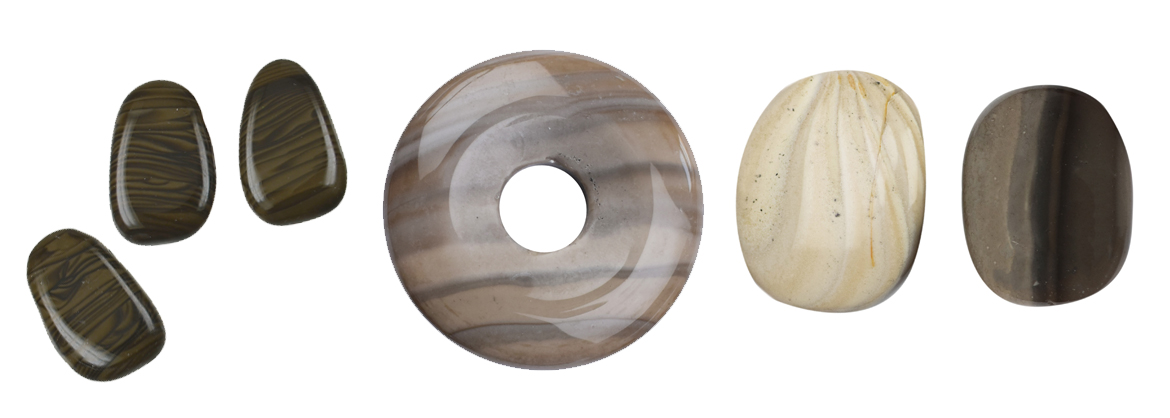
Flint - Bearing, meaning and application
Flint strengthens the skills necessary for understanding and communication with fellow human beings. Balance and composure are supported, so that again something more calm and relaxation Hold entry. So strengthened by the Flint, it is also easier to listen more closely and look, but also the own concerns understandably vorzubringen. Here not only the spoken word counts, but above all also actions.
The own point of view becomes more clearly with the support of flint and self-assurance can grow. Thus in itself resting it becomes easier to konzentriert zuhörren and to separate thereby the important from the unimportant. With a lot of empathy, understanding and composure, communication with other people goes more smoothly. Many a misunderstanding or disagreement, which arose in the hectic pace of everyday life, can be eliminated from the world.
Gained knowledge can be more easily translated into action with the support of the Flint. Uncomplicated and without much effort, the plans and intentions that have grown from the thoughts and insights can be implemented in everyday life. Thus, life can be active and full of joie de vivre and momentum designed and enjoyed.
Tumbled stones, donuts, focal components made of flint for retailer
Origin of the name Flint and synonyms
The name Flint comes from the Germanic and means translated "splinter". Hereby the already since the early human history known property is described to strike sparks ("flint"). Mineralogically Flint consists of an intimate intergrowth of microcrystalline trigonal quartz (jasper and/or chalcedony) and amorphous opal. It belongs to the "chert group"; the waxy luster of chert, reminiscent of animal horns, was the inspiration for this name. Synonyms are mozarkite, flint, sausage stone, bushstone, flint, chert, zinopel, plinz, keratite and kornite. Flintstones that naturally have a hole are called "chicken gods". These are considered in the Baltic region since ancient times as protective stones.
Formation of Flint
Flint is formed secondarily from siliceous fluids that displace the original rock. Starting materials for the silica are dead animal organisms with silica skeletons such as protozoa (e.g. radiolarians or diatoms) or siliceous sponges, i.e. purely marine sediments. Due to the pressure of the overlying sediments, the mass is first dehydrated, after which opal and quartz are formed. Through this dehydration (dehydration) and the associated transformation of opal to chalcedony, flint usually gets a white rind or even a structure reminiscent of onion skins.
The appearance of the chert group in the deposit is amorphous (structureless) with fibrous over coarse to fine-grained structure, which is why clear crystal forms are never found. The formed aggregates are irregular, mostly bulbous-round, but occasionally massive layers with partly colorful, jasper-like banding can be found.
Colours of Flint
The colors of the Flint are mostly gray, blue, brown or brown-black tones. The colors are mainly due to carbon (bitumen), phosphates and iron oxides. When exposed from the surrounding matrix and/or by dislodging from the parent rock, Flint is exposed to weathering. The color at the fresh fracture fades and becomes increasingly milky. If the Flint is additionally exposed to moisture, the fading is accelerated even further.

Flint occurs worldwide; however, the finds in the universally known chalk cliffs of the Baltic Sea and on the English south coast as well as the sites in the south of Poland are particularly popular. Our wholesale offer of Flint comes from Polish raw material. From this only quite small occurrence is very rarely only raw material available. We were able to get hold of a small batch, which we have processed completely - so quickly comes no more goods after!
Use of Flint
Flint served because of its great hardness and the conchoidal fracture in the Stone Age for manufacture of blades, hand wedges and arrow and spearheads and is therefore one of the oldest tools of mankind. Sharp striking edges by processing and the typical conchoidal fracture also makes the stone sharp scratching and scraping instruments. In Europe, about 100 stone-age flint mines are known, in which the raw material was extracted. The property to spark, which is possible by frictional heat together with Pyrite or Marcasite, was also used since that time to make fire ("flint").
In the 17th century, flintlock rifles (so-called "shotguns") were thereby ignited black powder, the combustion gases of which drove the bullet out of the barrel. Since ancient times, especially in England, Flint has been used as a building material for almost all kinds of buildings. It is little known as a gemstone, but it is increasingly valued in stone healing. Historical lore on the use and effects of Flint is currently unknown.
Tumbled stones, donuts, drilled stone and more made of Flint in our reseller webshop

Mineralogical profile of Flint
Chemical Formula: SiO2 + Fe, Al, PO4
Mineral Class: Oxides
Origin: secondarily from fluids circulating in the rock, which lead to the formation of the flint concretions due to the accumulation and compression of silica
Color: gray-white, bluish, gray, smoky brown to brown-black
Gloss: waxy luster
Crystal system: trigonal (quartz portion) and amorphous (opal portion)
Mohs hardness: 6.5 to 7
Fissility, fracture: no fissility; conchoidal fracture
Occurrence, main supplying countries: Poland, Germany (chalk rocks of the Baltic Sea), England
Appearance: translucent to opaque bulbous concretions, raw often with white crust or embedded in the parent rock
Availability: rare to good depending on origin
In astrology Flint strengthens the emotional balance of Libra-born. It improves the communication of Capricorn-born and the empathy of Aries-born.